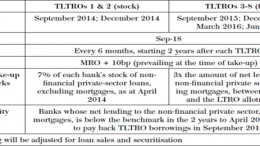European banks raised €35 billion in CoCos in 2014
MADRID | By The Corner | European banks have strenghtened their capital ratios for the upcoming stress tests and the AQR, whose results will be known after the summer. In that sense, between July 2013 and May 2014, EZ lenders increased their base capital by €45 billion, although it wasn’t entirely by issuing shares but contingent convertible bonds (CoCos), by which they would have raised around €35 billion.



